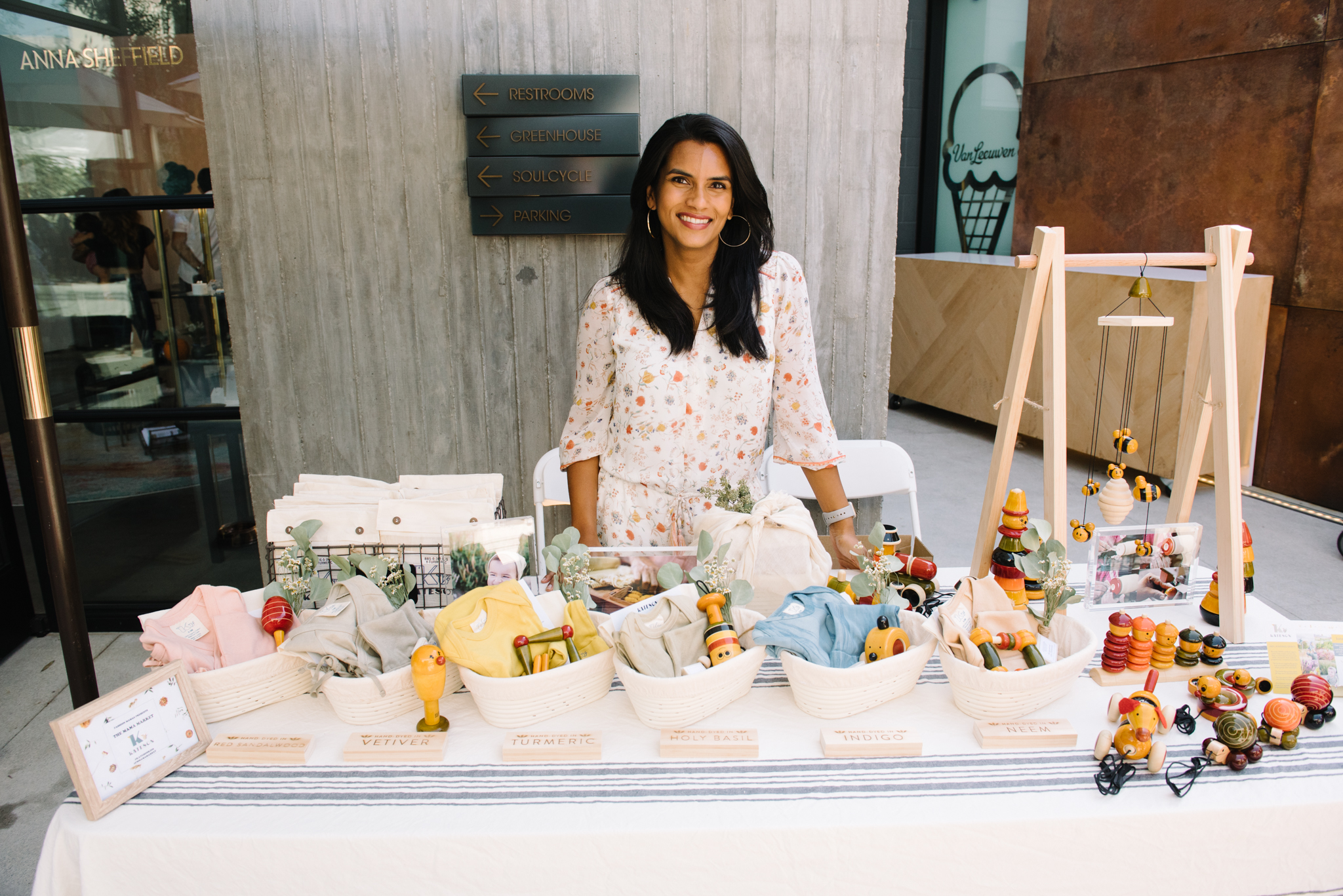How Kateson’s Tanya Thomas-Thorpe Practices Mindful and Sustainable Living
Images via Daniele Rose and Howl & Rose
Having grown up with a mother who was inherently sustainable — long before that was a buzzword — Tanya Thomas-Thorpe came across this kind of living organically (pun intended). This environmentally conscious way of thinking only got stronger when she became a mother. In fact, now in addition to her work as a successful voice talent (perhaps you've heard her in Target or iTunes ads?) Thomas-Thorpe has made mindful living into a career by launching Kateson, a baby brand that offers naturally-dyed clothing, sustainable wooden toys, and plant-based soaps.
Tanya and her husband began Kateson after noticing a gap in the market, and once they laid their eyes on a dye house in Kerala, India that offered ethical treatment of workers as well as dyes derived from plants known for their wellness benefits, they knew they it was a match made in eco-friendly heaven. Because of her expertise, we turned to the Thousand Oaks based mama of two for a little intel on what most of us may not know about toxic dye processes and how we can live a little more mindfully.
How did you first become interested in sustainability?
My mom is the queen of sustainability without even knowing it. I grew up watching her save and reuse everything, make clothes out of cotton tablecloths she no longer needed, treasure what she had so they lasted longer, dry clothes on a clothesline, never waste food and so on. I had an early introduction and I’m so thankful for her!
And how did that change when you became a mom?
It definitely made me more aware of my buying choices. It made me want to learn about the ingredients going into everything we eat, wear and use on a daily basis. For instance, I knew I didn’t want my babies sleeping in pajamas coated in flame retardants. That brought me to brands that made it a priority to provide safe pajamas for babies and kids.
Tell us something most people don't know about toxic dyeing processes, as well as how Kateson is different.
According to the World Bank, 20% of industrial water pollution comes from textile dyeing and treatment. 72 toxic chemicals in our water come solely from textile dyeing, 30 of which can’t be removed. Runoff from synthetic dye flows into the environment, killing aquatic life, damaging soil, poisoning drinking water, wasting energy and the list goes on. There are so many companies working to eradicate the problem, and it’s always fun to discover them!
At Kateson, we do our small part by using hues derived from safe, beneficial herbs, which are renewable non-toxic resources and biodegradable. The dyes are also living color, yielding complex, subtle, glowing hues that belong to nature alone! The dye water waste is used to nourish the land.
Tell us why your dye house in India is such a magical place.
I definitely fell in love with it! Imagine if your house is built with bricks and tiles made from filtered clay that was ground and mixed with beneficial herbs. It’s surrounded with lush, green, wild grown, tropical trees and plants. The herbs that are grown are used in the traditional health system of India called Ayurveda. The Sanskrit word Ayur translates to health and Veda means wisdom. It is plant magic heaven. Clothing to them is used as a means to protect and heal. I remember I had a big scratch from brushing my hand against a sharp stem. They immediately grabbed a leaf from an Iodine plant and rubbed it on my wound. I left India without a scar.
What are some other ways your family makes an effort to have a sustainable household?
Our family is definitely a work in progress. We’ve tried composting, but that proved to be a little tough for us. Hopefully we’ll revisit that another time! Our family shares one Prius, making that work most of time due to my husband and I working from home. We teach our kids to treasure and take care of what they own so we discard less. We choose organic foods when they are available. I think what’s important is that you do your best to lead a more conscious and less wasteful household.
For mamas who are trying to live more mindfully, what are three easy (but important) life changes they can start with?
Mindfulness as a mama to me is being fully present with my children and my surroundings: listening, being aware, acknowledging feelings and interacting with them from a place of love. In order to spring from that welcoming space, I wake up at 5:30am to walk my Australian Shepherd, meditate for 20 minutes, practice Surya Namaskar (Sun Salutations) and exercise if the kids are not up by 7:00am. 3 breath hugs! This is absolute magic. At least once a day, I hug my kids and take 3 synchronized deep breaths with them to connect hearts, heal tender souls and just relish their presence. I first learned about it from reading the works of Thich Nhat Hanh.
Just like the meaning of namaste ("I acknowledge the divine in you"), I greet anyone I meet with a silent “I love you.” It immediately softens my brow, brings a smile to my lips and connects me with the person in front of me.



